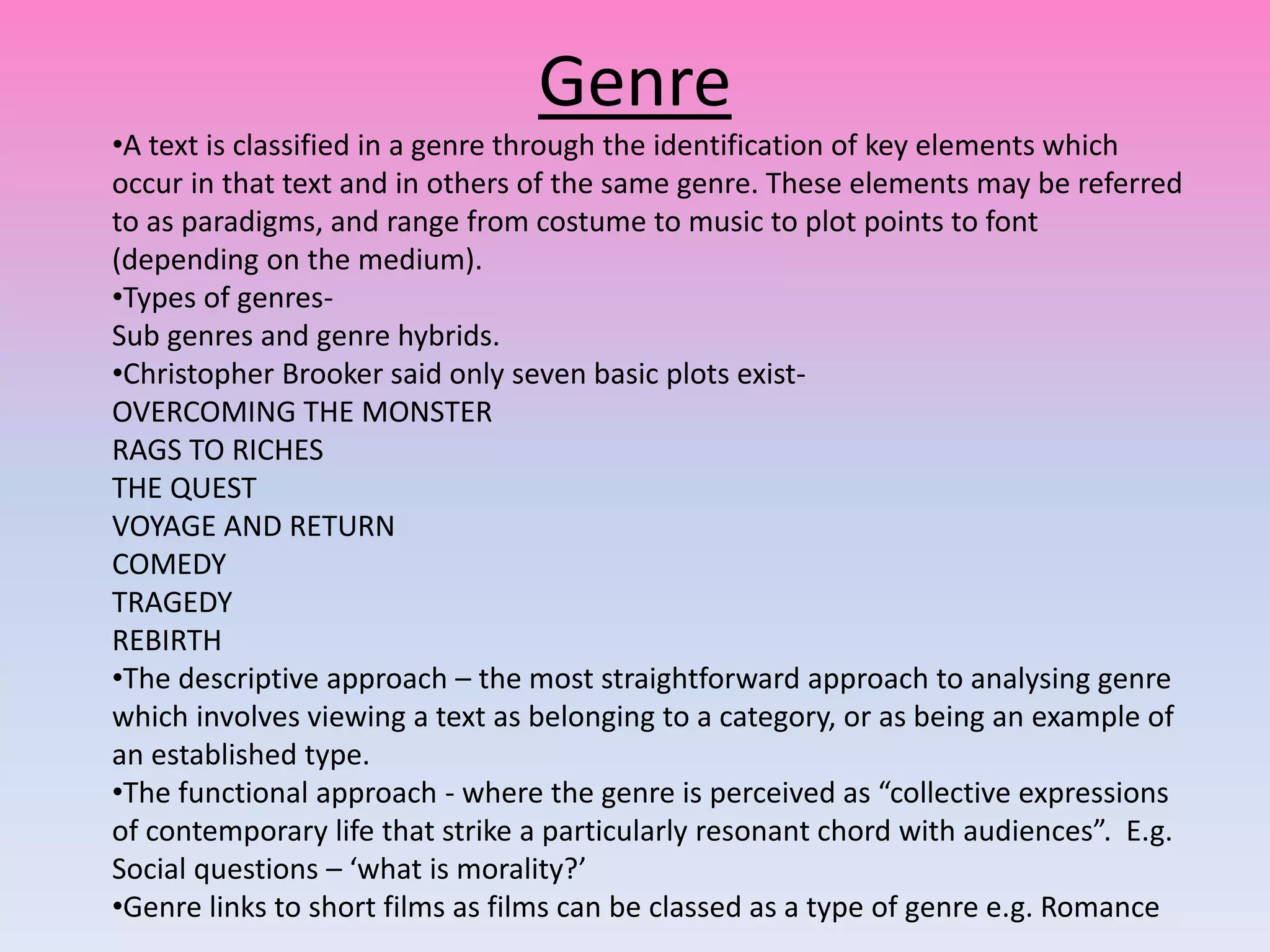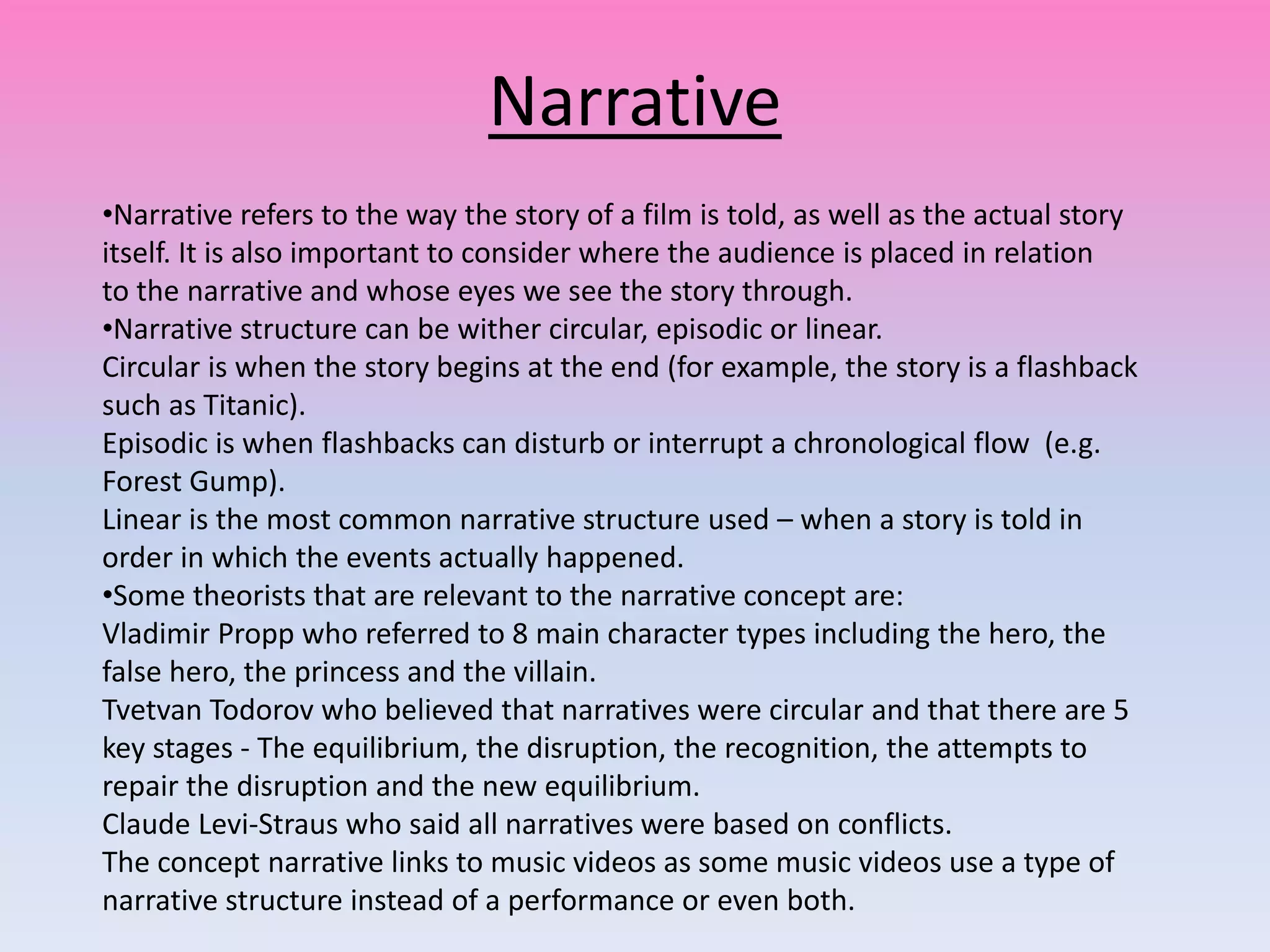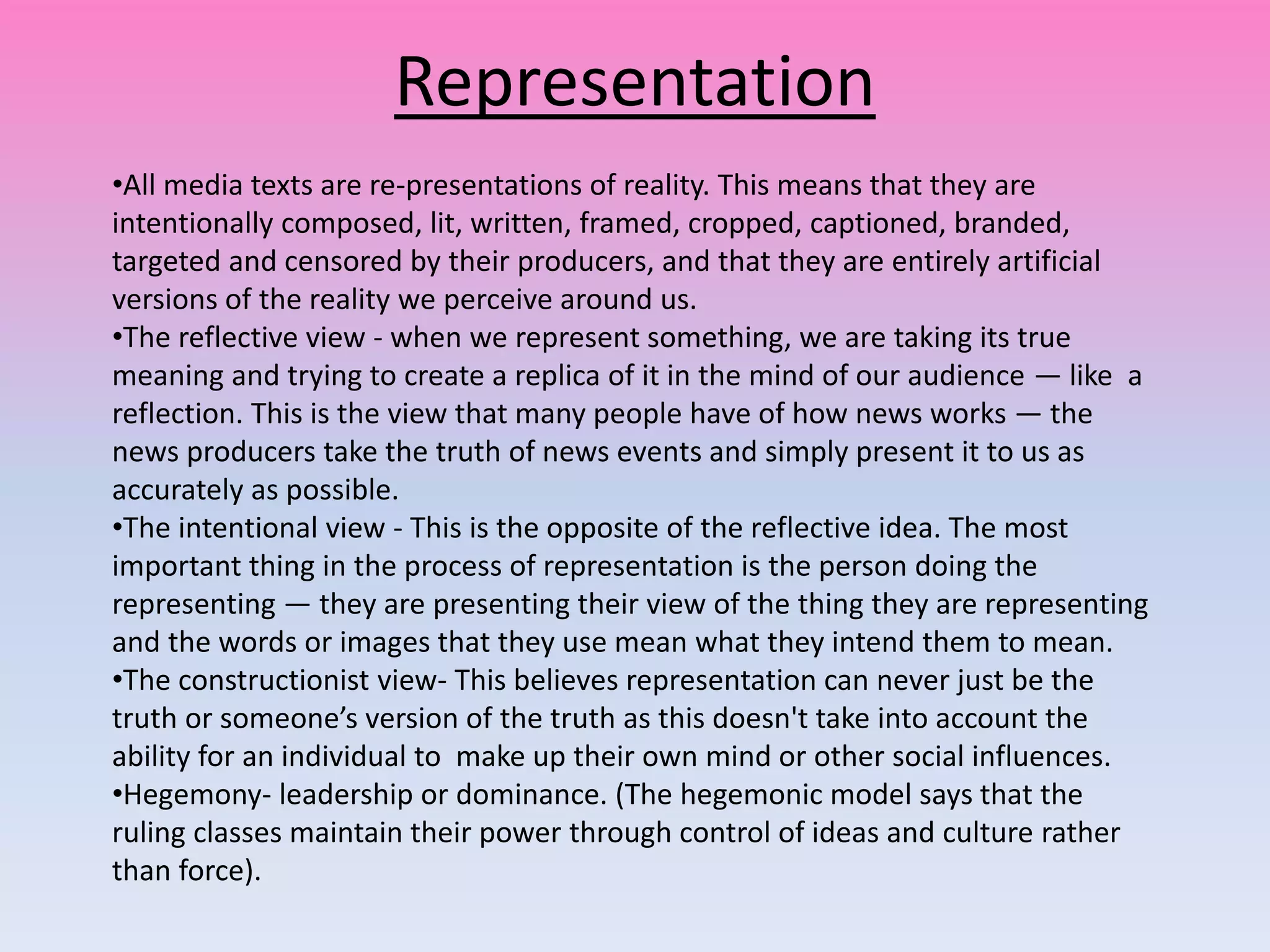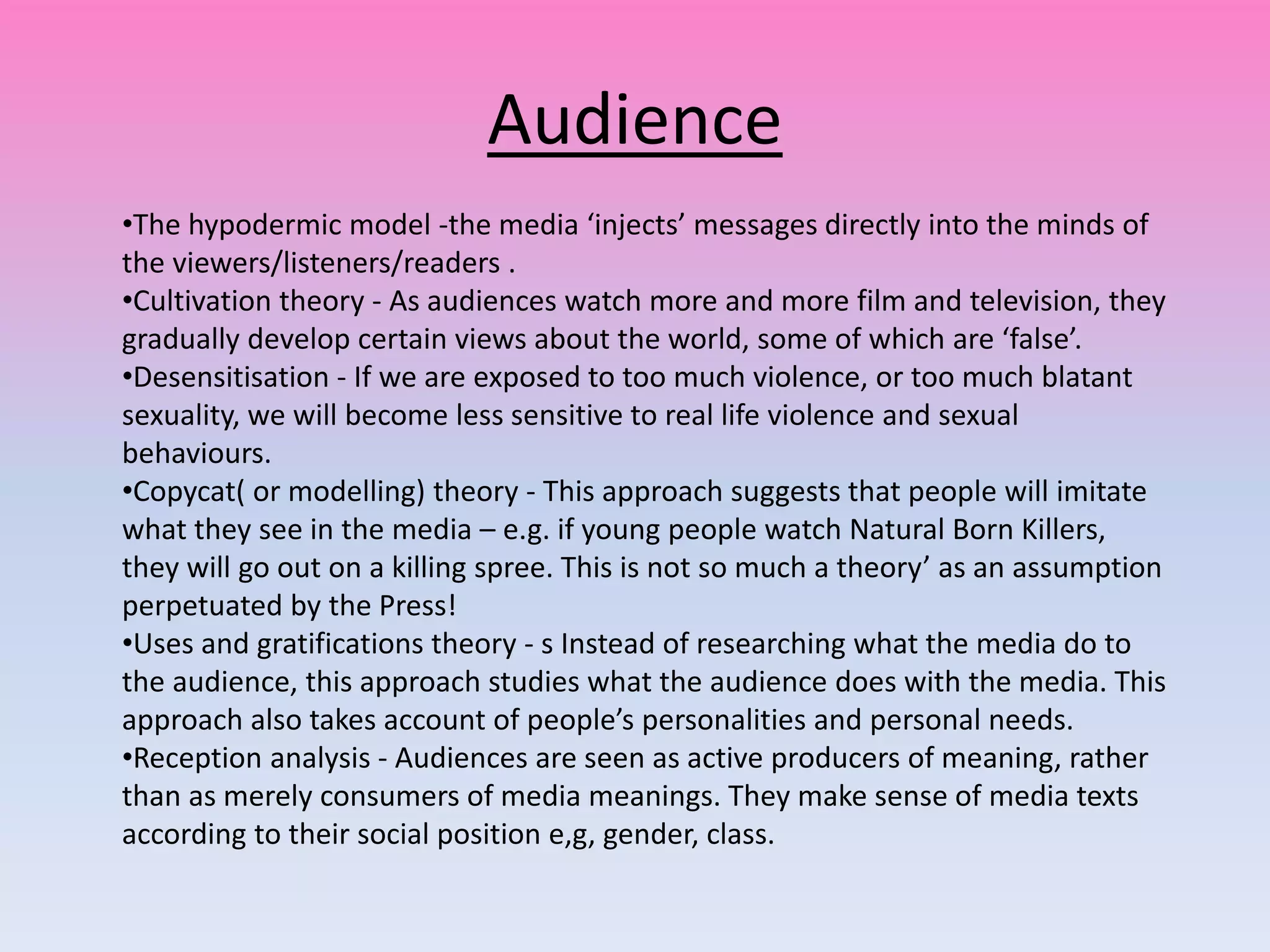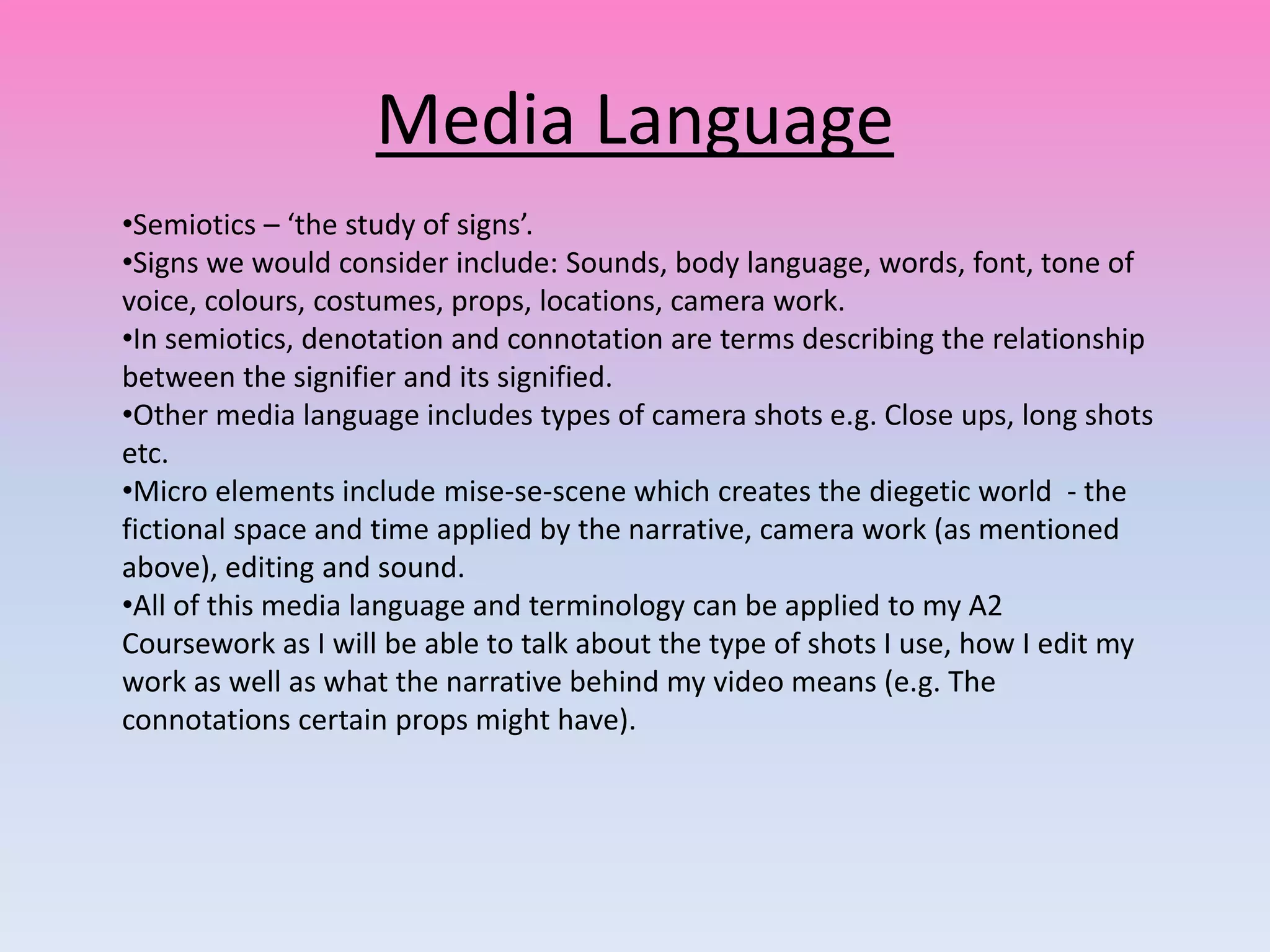This document discusses key concepts related to genre, narrative, representation, audience, and media language. It defines genre as a categorization based on common elements like plot points. Narrative refers to the story and structure, such as linear or circular. Representation is how media presents versions of reality intentionally through production choices. Audience theories explore how media affects or is interpreted by viewers. Media language includes signs like camera shots and editing that convey meaning.

